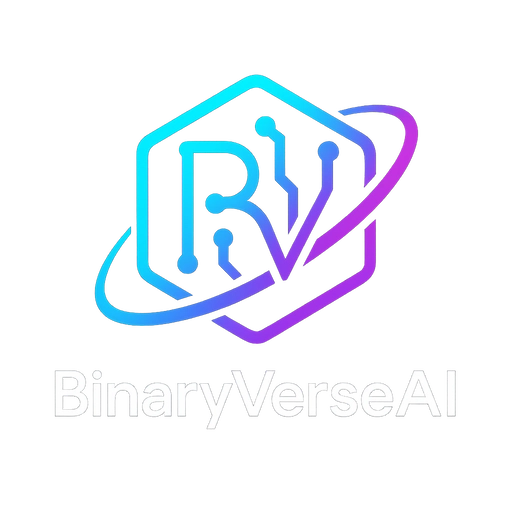Written for engineers, students, makers, and the plain curious who want to push modern artificial intelligence without spending a dime.
1. Why Gemini AI Changes Everything
The last decade taught us a tough lesson. Powerful models often hide behind paywalls and subscription tiers that filter innovation. Google challenged that pattern by giving anyone with a Google account the keys to Gemini AI. The company did not hold back a watered-down toy. Instead it made a multimodal giant that writes code, designs art, reads video, narrates audio, and builds cited research papers. All those functions run on hardware you already own, and the free tier is generous. This guide delivers a tour of every free Gemini tool, real use cases, advanced tips, and a peek at what happens when billions of fresh minds receive state-of-the-art capability at zero cost.
Table of Contents
2. The Gemini AI Family Tree in Plain English
| Tier | Core Strength | Typical Context Window | Expected Response Time |
|---|---|---|---|
| Gemini 2.5 Flash | Fast answers, solid reasoning | 32K tokens | One to three seconds |
| Gemini 2.5 Flash Thinking | Same speed, shows reasoning chain | 64K tokens | Four to six seconds |
| Gemini 2.5 Pro | Deep logic, advanced math, extreme context | 1M tokens during trials | Ten seconds on heavy prompts |
Gemini AI is not a single network. It is an ecosystem of sibling models that share one architecture.
Free users interact mainly with Flash, yet Google occasionally unlocks Pro previews so casual users can taste the top shelf. All tiers talk text, images, audio, code, and they all inherit the same safety shields.
3. Gemini Chat: The Everyday Launchpad

Open gemini.google.com, sign in, and you enter the core chat portal. The interface looks sparse on purpose. Behind its simplicity sits a full stack of hidden tricks.
- Multimodal Prompts
Drop an image of a calculus problem, type “Explain the core concept,” and Gemini AI returns a step-by-step proof with optional Wolfram syntax. - File Uploads
Attach a CSV of workout data and ask for a personalized training plan. Gemini graphs your heart-rate zones, finds plateaus, and suggests progressive overload routines. - Deep Research Toggle
Click the microscope icon when you need a structured investigation with sources. More on that in Section 8.
Gemini Chat never demands a token count estimate. Just write. If your document exceeds the current mode’s limit, Gemini flags the issue and guides you toward a higher-context mode or AI Studio.
4. Google AI Studio: The Playground Turned Factory

Navigate to ai.google.dev or aistudio.google.com. AI Studio collects four power panels: Prompt, Build, Media, and Stream. Each one deserves its own spotlight.
4.1 Prompt Panel: Raw Experimentation
This is the classic playground many developers remember from early GPT demos, yet it now supports images, audio snippets, and JSON payloads. Dial temperature for creativity, set top-P for focus, and pin the request. Saving pinned prompts lets teams share prompt recipes. One community example: a pinned prompt titled UX Copy Polisher converts blunt engineering strings into friendly mobile microcopy.
4.2 Build Panel: Code Without the Grunt Work
Type “Generate a finance tracker Progressive Web App that stores entries locally and syncs with Firebase when online.” Click Run. Gemini drafts the service worker, builds an indexedDB cache, wires Firebase calls, and writes a README. Most first-run code compiles without edits.
Better yet, Build supports recursive follow-up. Tell Gemini, “Replace Firebase with Supabase because I prefer SQL,” and it rewires the backend. Students who once dreaded CRUD tutorials now race through complete projects in an afternoon.
4.3 Media Panel: Imagen, Speech, and Soon Veo
The Media tab bundles three creative engines.
- Imagen Image Generator
Prompts accept style cues, camera lenses, and color palettes. Ask for “An isometric cyberpunk library made of glass and brushed copper, sunrise lighting,” and four crisp renders land in under thirty seconds. Every render shows a discrete watermark through SynthID, invisible to humans yet detectable by tools, so ethical usage stays easy. - Speech Generation
Select single or multi-speaker mode, pick voice identities, paste a script, and press Run. The output is a studio-grade WAV file. Writers use it for audiobook pitch reels. Language learners shadow the generated dialogue for accent training. - Veo Video Previews
Full Veo access sits behind the Ultra tier for heavy workflows, but Google occasionally releases limited runs in Media so hobbyists can test ten-second clips. The window appears without fanfare, so check the tab often.
4.4 Stream Panel: Live Interaction Steps Beyond Chat
Stream offers three ways to hand Gemini fresh sensory data.
- Talk: Pure voice chat. You can interrupt with “Hold that thought” and steer the dialogue.
- Webcam: Real-time scene analysis. Gardeners point the lens at a leaf and Gemini spots early blight. Bike commuters show a chain tangle and hear repair steps.
- Screen Share: Ideal for software walkthroughs. A video editor shares Premiere Pro and asks, “Where’s the three-way color corrector?” Gemini highlights the panel, explains lumetri scopes, and waits for follow-up.
No separate driver installs, just browser permission prompts.
5. Canvas Mode: Where Answers Meet Visualization
Canvas appears inside Chat and AI Studio when users request a live visual. It renders charts, diagrams, or interactive widgets alongside text output.
- Stat Plots
Paste a two-column table of highway fuel and speed. Say, “Graph speed on the x-axis, fuel economy on the y-axis, then fit a quadratic trend.” Canvas draws the scatter plot, overlays the curve, and prints the equation. - Geospatial Maps
Provide a JSON array of earthquake events. Ask, “Place circles on a world map sized by magnitude.” Canvas serves a clickable map. - App Demos
When Build returns a JavaScript snippet, click Preview in Canvas for an instant sandbox. This sidesteps environment setup.
Canvas saves exports as PNG, SVG, or raw code so designers integrate assets without conversion headaches.
6. Imagen: Unlimited Art for Zero Dollars

Many free tiers throttle daily image requests. Gemini AI free does not. Creators have exploited that to sketch entire picture books before lunch.
- Concept Art: Indie game makers feed rough pixel mock-ups and prompt for “Modern AAA realism.” Imagen upscales environments while preserving layout.
- Brand Packs: Small businesses present three mood-board images and ask for “A unified visual identity.” Gemini outputs a color guide, typography suggestions, and ten sample posters.
- Generative Mash-ups: Classroom projects ask for “A baroque portrait of Ada Lovelace wearing augmented-reality glasses.” Imagen delivers an oil-paint texture fused with cyberpunk sheen.
Finished files include alt text with the phrase “Gemini AI image generator” so SEO remains ethical and transparent.
7. Gemini Live: Speak, Show, Learn
On Android and iOS the Gemini app merges microphone, camera, and local processing.
- Conversation Practice: A Korean language learner flips the app into Korean, toggles full voice, and debates weekend plans. Gemini corrects pronunciation on the fly.
- Hands-Free Coding Help: A developer points the phone at an error log displayed on a second monitor. Gemini reads the snippet and recommends a missing dependency fix.
- Cooking Coach: A chef lifts the pot lid, shows the risotto, and asks if the texture is ready. Gemini checks grain opacity and says, “Stir for two more minutes. Add a splash of broth if it stiffens.”
Live sessions obey the same safety rails as text chat, and nothing feeds model training.
8. Deep Research: Autopilot for Serious Inquiry
Toggle the flask icon in Gemini Chat for research that rivals a grad assistant.
- Gemini decomposes the question.
- It searches the web, opens articles, scrolls, extracts sections, and stores references.
- It clusters findings, ranks evidence, and drafts a multi-layer report.
- The final answer arrives inside chat plus a “Open in Docs” button.
Free accounts run around five long reports each month. Students describe Deep Research as a “turbo library crawl” that shortens literature reviews from days to minutes.
9. NotebookLM: Turn Static Notes Into Living Tutors
NotebookLM was once a quiet Google Labs project named Tailwind. With Gemini it became a scholar’s pocket companion.
- Source Ingestion: Drag and drop PDFs, Word docs, slides, and whole webpages.
- Grounded Q&A: Ask direct questions and NotebookLM cites exact lines.
- Study Guides: One click writes chapter summaries, flashcards, and quiz questions.
- AI Audio Overview: Gemini builds a two-person podcast episode that discusses the document. Commuters absorb coursework while driving.
Everything stays private and revocable. Replace sources and the model forgets obsolete material.
10. Google Workspace Extensions: Productivity on Tap
Gemini shows up inside familiar Google products.
- Gmail: Draft full replies, shorten introductions, or shift tone from casual to formal.
- Docs: Summarize a twenty-page brainstorm into executive bullets.
- Sheets: Ask, “Generate a pivot table of sales by region then plot growth,” and Gemini inserts both result and chart.
- Slides: Provide a bullet list, request “Convert to speaker notes plus two graphic slides,” and Slides builds the deck.
- Meet: Real-time captions translate forty languages. After a call Gemini writes a minutes document and schedules tasks in Calendar.
Workspace integration remains free for personal accounts. Business tiers receive bigger quotas and audit logs but the same AI brain.
11. API Gateway: Gemini Under Your Hood
Inside AI Studio click Get API Key. The free quota shifts over time but usually allows thousands of tokens per day, enough for hobby projects.
- Rapid Prototyping: A React front-end calls Gemini to parse sensor data and suggest maintenance actions.
- Game Narration: A Unity project streams player choices to the API, and Gemini produces dynamic story branches.
- Data Labeling: Python scripts hit Gemini for quick category tags in NLP tasks, cutting annotation hours.
Google Cloud customers can swap serverless endpoints with the same key, ensuring products scale without code changes.
12. Hidden Extras and Experimental Labs
Google sprinkles surprise gifts across the ecosystem.
- Salsa Extensions for YouTube: Open a cooking video, click the Gemini Assistant, and ask for time-stamped ingredient lists.
- Gemini in Chrome: Right click any web paragraph, choose “Explain quickly,” and a side pane opens with a casual summary.
- Android System Prompt: On some Pixel phones you press power, speak casually, and Gemini floats atop any app, similar to Chat Heads circa 2013.
- Gemini AI studio Data Connectors: Beta plugins let Gemini query Cloud SQL tables or BigQuery datasets with simple English.
These small tools often start experimental yet graduate to core status once feedback cycles complete.
13. Real-World Workflows: Putting It All Together
A day in the life of Lara, a solo indie developer, showcases synergy across tools.
- Morning Brain Dump
Lara opens NotebookLM, uploads her game design doc, and asks for a task roadmap. Gemini outputs a Kanban list. - Asset Creation
She drafts character art in Imagen, retouches with minor prompt tweaks, and exports transparent PNGs. - Gameplay Prototype
In Build, Lara types “Platformer engine with parallax scrolling and double jump.” Gemini writes TypeScript, bundles Vite, and returns a zipped project. - Narrative Voice
Media Speech Generation turns her dialogue into voice lines, one male and one female. - Polish and Content
Lara records a devlog. Gemini transcribes it, extracts chapters, and suggests YouTube timestamps. - Marketing Email
In Gmail she drafts an announcement. Gemini rewrites it with punchy storytelling. - Evening Study
NotebookLM consumes her notes on shader math. Audio Overview becomes bedtime listening.
Total budget? Zero dollars. Total compute? Cloud-side, handled by Google.
14. Gemini AI Free vs ChatGPT Free vs Claude Free
| Feature | Gemini AI Free | ChatGPT Free | Claude Free |
|---|---|---|---|
| Multimodal input | Text, image, audio | Text only | Text only |
| Image generation | Unlimited | Small quota | None |
| Voice chat | Full duplex | Elementary | None |
| Deep Research | Built in | Not offered | Minimal |
| Context window | 32K+ tokens | 8K tokens | 100K tokens |
| Video analysis | Yes | Transcript reading | None |
| Workspace add-ons | Gmail, Docs, Sheets | Limited to Bing integration | None |
| Pricing model | No fee | No fee | No fee |
Claude focuses on large text digestion. ChatGPT shines in creative long-form writing. Gemini AI wins breadth, integration, and unlimited media processing.
15. Ten Expert Tips for Pushing the Free Tier
- Switch the model dropdown to Flash Thinking when you need transparent reasoning.
- Paste CSV lines directly into Chat then ask for a graph in Canvas, no separate upload needed.
- Chain Media and Build. Generate an image, feed it back as a texture inside a three.js scene.
- Use voice interruption to adjust path without restarting context.
- For screen share tutorials, zoom the UI so Gemini reads labels clearly.
- Combine Deep Research output with NotebookLM to create a personalized knowledge engine.
- Build prototypes on weekends. Google sometimes lifts quota on off-peak days.
- Embed SynthID checks into production pipelines to flag AI images before publishing.
- Drop “show me the JSON” to fetch structured responses for downstream parsing.
- Watch the @GeminiAICommunity channel on YouTube. Google hides weekly mini-lessons there.
16. The Road Ahead
Google engineers hint that the next Gemini wave will execute real-world actions under user supervision. Imagine telling your phone, “Plan a three-day trip to Lahore, book the train, and fill my itinerary calendar.” The agentic era will likely include secure authorization frameworks so Gemini can interact with payment systems, schedule meetings, or manage cloud resources only when you approve.
On the research front, the DeepMind half of the team teases transfer learning breakthroughs that could let Gemini AI learn a new coding language from a single RFC. That matters because narrow niches like COBOL modernization or quantum DSLs would become a prompt away.
17. Final Thoughts
Two years ago building an app, designing its promo art, voicing a trailer, and writing a market analysis would have required half a dozen paid tools or a small team. Gemini AI compresses that workflow into an afternoon and charges nothing. When students in rural classrooms wield the same creativity engines as Silicon Valley studios, the playing field tilts toward raw imagination rather than budget.
So fire up Chat, open AI Studio, point your phone camera at the next challenge life throws, and invite Gemini AI to help. The lab doors are wide open, the equipment is world class, and the only admission price is curiosity.
Azmat — Founder of Binary Verse AI | Tech Explorer and Observer of the Machine Mind Revolution. Looking for the smartest AI models ranked by real benchmarks? Explore our AI IQ Test 2025 results to see how top models. For questions or feedback, feel free to contact us or explore our website.
- https://blog.google/technology/ai/google-gemini-next-generation-model-february-2024/
- https://ai.google.dev/gemini-api/docs/models
- https://gemini.google.com/
- https://ai.google.dev/gemini-api/docs/billing
- https://gemini.google.com/updates
- https://store.google.com/intl/en_au/ideas/articles/gemini-pixel-guide/
- https://support.google.com/gemini/answer/14286560?hl=en&co=GENIE.Platform%3DDesktop
- https://play.google.com/store/apps/details?id=com.google.android.apps.googleassistant&hl=en_US
- https://support.google.com/gemini/answer/15274899?hl=en&ref_topic=15280100
- https://gemini.google/overview/canvas/?hl=en
- https://blog.google/technology/ai/notebooklm-audio-overviews/
- https://ai.google.dev/competition/projects/trekscape
- Agentic AI – A model that can autonomously perform multi-step tasks once a user grants permission.
- Canvas Mode – Gemini’s split-view workspace that shows visuals beside text for interactive manipulation.
- Context Window – Max tokens a model can remember in one conversation (Gemini up to 1M).
- Deep Research Toggle – Triggers a structured, cited report in Gemini Chat.
- indexedDB – Browser database storing data locally for offline access in web apps.
- Large Language Model (LLM) – AI trained on large datasets for natural-language tasks.
- Multimodal – AI that processes text, images, audio, and video in one model.
- Progressive Web App (PWA) – Web apps that act like native apps with offline support.
- Service Worker – Background script enabling caching, push notifications, and offline functionality in PWAs.
- Supabase – Open-source backend with PostgreSQL and real-time APIs.
- SynthID – Invisible watermarking tech for verifying AI-generated content.
- Temperature / Top-P – Parameters adjusting randomness and probability in AI outputs.
- Token – Smallest unit (e.g., word or symbol) used in model input/output.
- Veo – Google’s next-gen text-to-video AI model.
1. What is Gemini AI and how does it work?
Gemini AI is Google’s multimodal artificial-intelligence platform that unifies text, image, audio, and video processing in a single architecture. Users interact with it through products like Gemini Chat, AI Studio, and NotebookLM to generate content, write code, analyze data, and more, all via natural-language prompts.
2. Which AI model powers Gemini AI?
Gemini AI runs on Google’s proprietary Gemini family of large language models (currently Gemini 2.5 Flash, Flash Thinking, and Pro). These models share one transformer-based architecture optimized for fast reasoning, long context windows (up to 1 million tokens in trials), and seamless multimodal input.
3. Is Gemini AI free to use?
Yes. Anyone with a Google account can access Gemini AI’s core features—chat, image generation, voice interaction, and API keys—at no cost. While paid enterprise tiers unlock higher quotas, the free plan is generous enough for most personal, academic, and prototype projects.
4. Is Gemini AI better than ChatGPT?
“Better” depends on your use case. Gemini AI excels in breadth (unlimited image generation, built-in research mode, deep Google Workspace integration, and real-time vision/voice features). ChatGPT shines in creative long-form writing and third-party plug-ins. For multimodal workflows on a zero-dollar budget, Gemini AI currently offers more tools out of the box.
5. What are the key differences between GPT-4 and Gemini AI?
Developer: GPT-4 is by OpenAI; Gemini AI is by Google DeepMind.
Modalities: GPT-4 Turbo handles text, images, and limited audio; Gemini AI adds native video analysis and unlimited image generation.
Context window: GPT-4 Turbo supports ~128 k tokens; Gemini 2.5 Pro trials reach up to 1 M tokens.
Ecosystem: GPT-4 integrates with Microsoft products, while Gemini AI is embedded across Google Workspace, Android, and Chrome.
Pricing: Both offer free tiers, but Gemini AI’s free plan includes multimodal media tools that GPT-4 free lacks.

